Little Ginza in Hong Kong: A Brief History of Causeway Bay's Japanese Department Stores
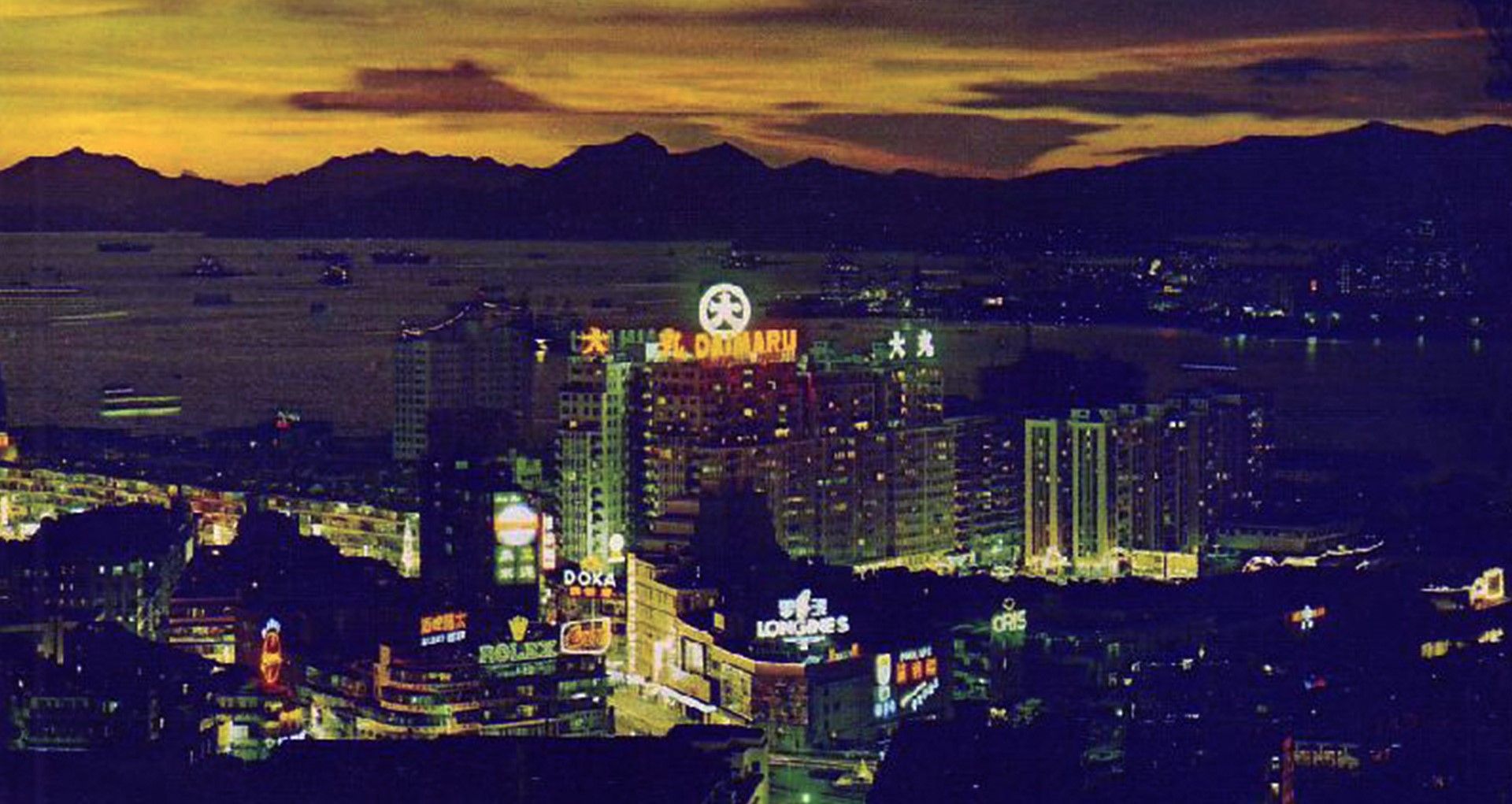
Hong Kong’s legendary ‘Opium King’ Lee Hysan (1879 – 1928) purchased East Point Hill from Jardine Matheson & Co. in 1923. He transformed it from an industrial wasteland into a bustling commercial district filled with restaurants, theatres, and the Lee Garden amusement park. But Lee wasn't the only driving force behind Causeway Bay’s transformation into Hong Kong’s go-to destination for fun and leisure.
A major turning point came in the 1960s, when a wave of Japanese department stores began setting up shop in the area—starting with Daimaru, the first to arrive. At their peak, four major department stores—Daimaru, Matsuzakaya, Mitsukoshi, and SOGO—occupied more than a whopping 500,000 (!) square feet of retail space. These retail giants not only shaped the shopping culture in Causeway Bay but turned it into a vibrant “Little Japan” and cemented its status as Hong Kong’s top shopping district.
Let’s take a walk down memory lane to explore the history and legacy of these iconic Japanese department stores in Causeway Bay.
1. DAIMARU (1960 - 1998)
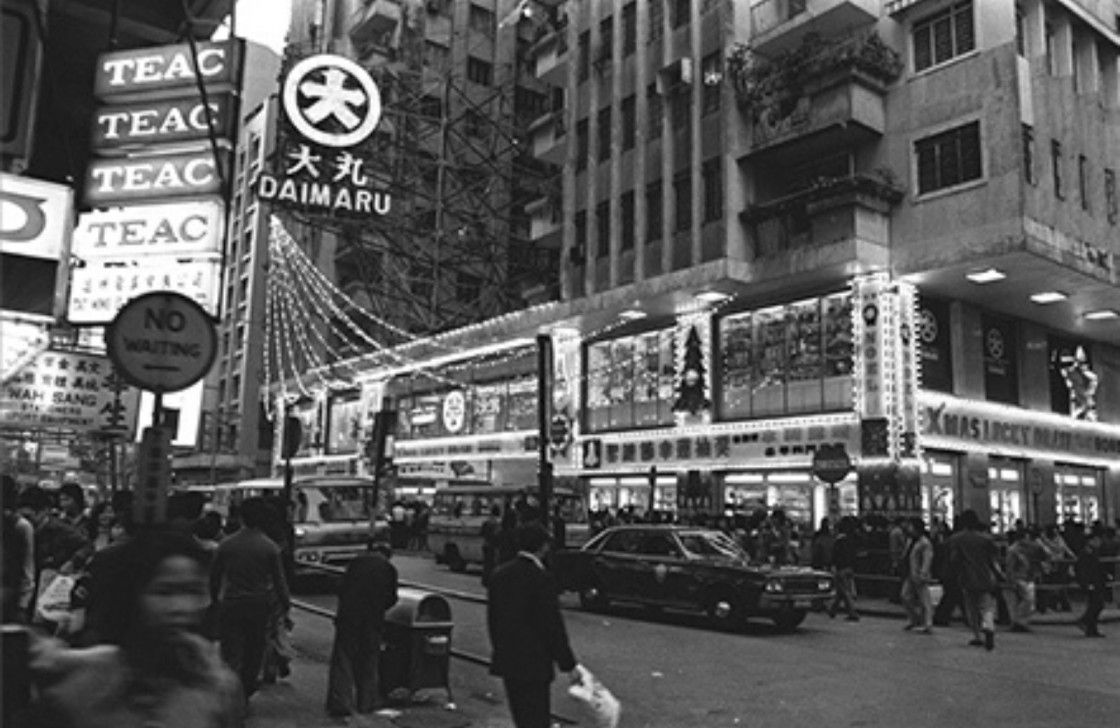
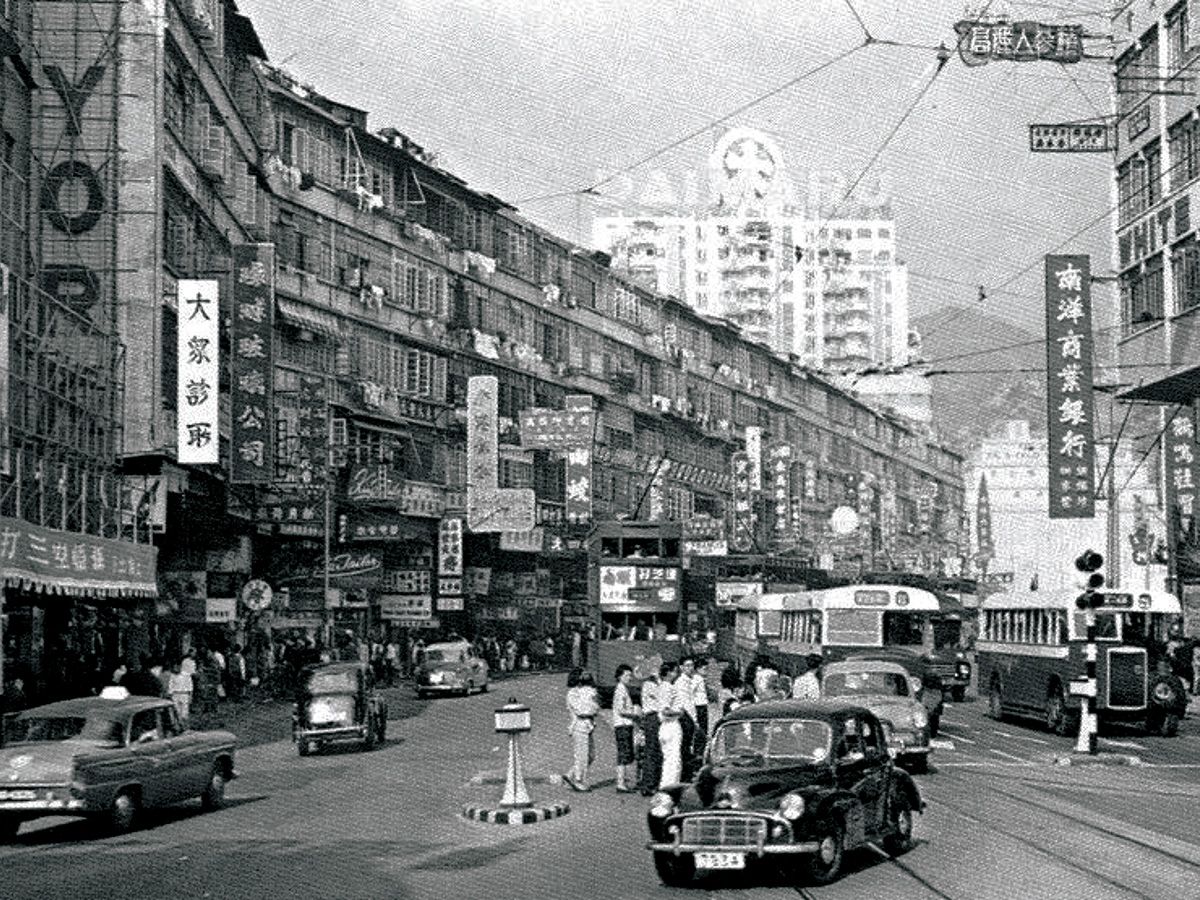
Before it became the shopping hotspot Fashion Walk we know today, this corner of Causeway Bay was home to a soybean warehouse; it's even where the ever-popular Vitasoy milk was once produced, back in the 1950s.
When Daimaru opened it's doors here—on the intersection of Paterson Street and Great George Street—in November 1960, it marked the first overseas branch of the Japanese retail giant. Over 4,000 guests attended the grand opening cocktail party. The South China Morning Post reported:
“The store is ultra-modern and streamlined. The goods are attractively displayed on well-spaced counters, and soft music provides a constant background”.

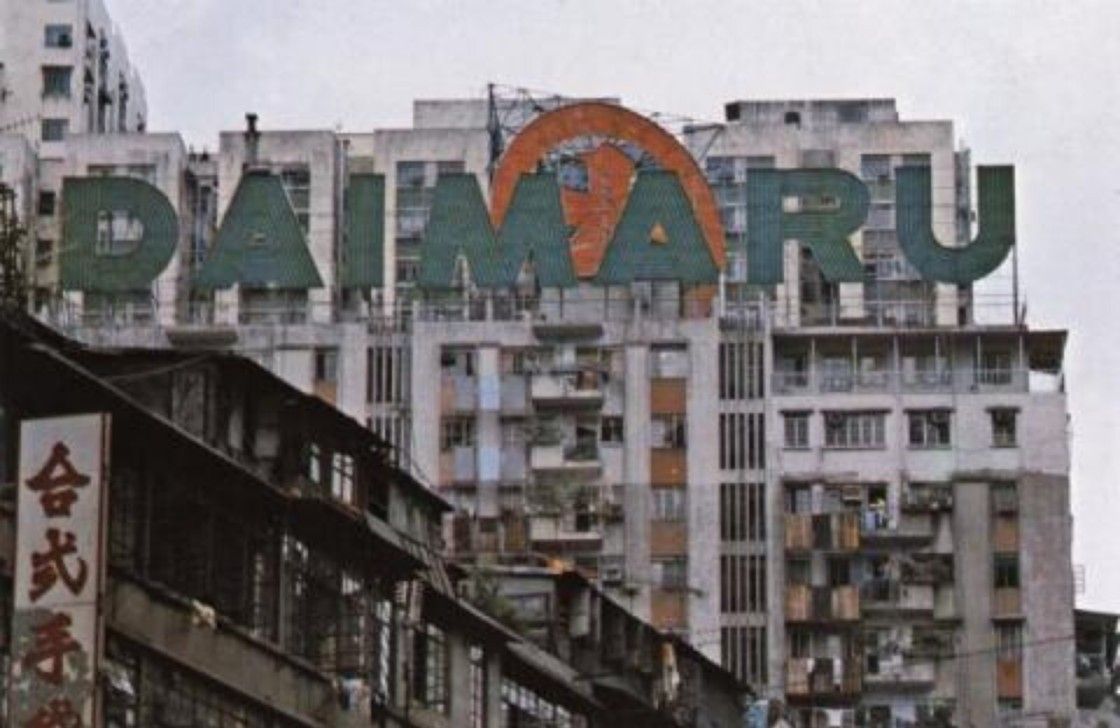
At its height, Daimaru employed 400 local workers, all rigorously trained in Japanese customer service by 15 Japanese managers. The store became famous for its hospitality, influencing every Japanese department store that followed. Locals flocked there for toys, stylish clothes, and home appliances like rice cookers and TVs.
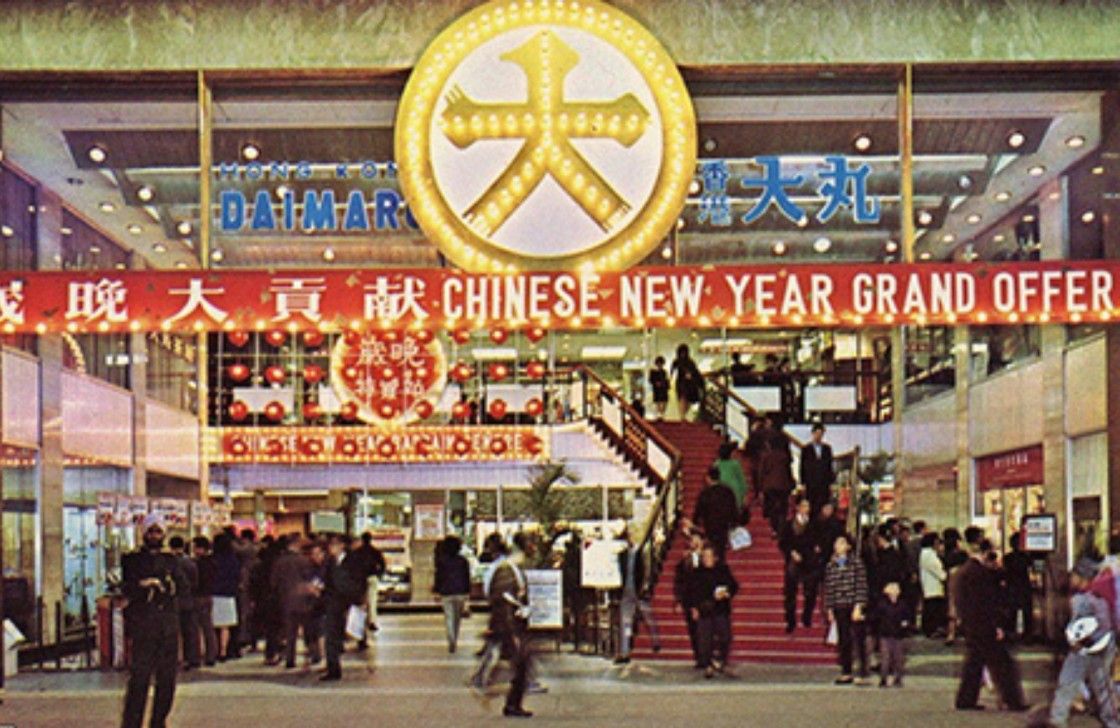
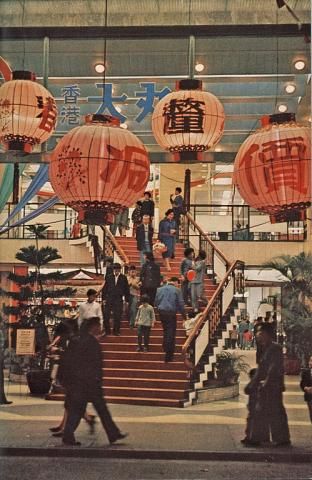
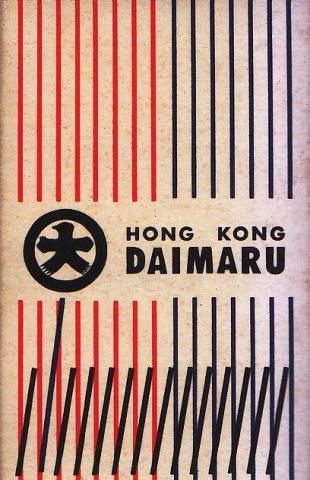
The store’s Cantonese nickname, Daai Yun, became so iconic that it was adopted by the nearby minibus terminal. Its fiery red neon signage on top of the Great George Building became a local landmark. Even though the department store is long gone—rising rents eventually killed the family-friendly emporium in 1998—its legacy lives on.
Paterson St / Great George St
2. MATSUZAKAYA (1975 – 1998)
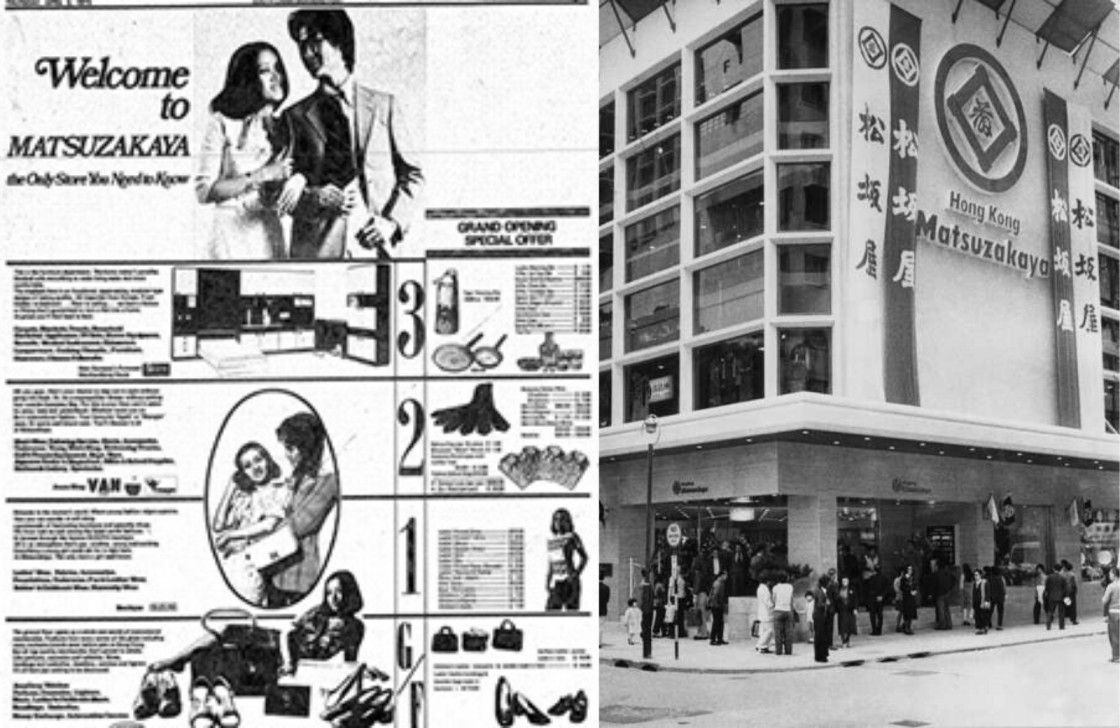
Matsuzakaya introduced many Hongkongers to Japanese culture—from records and homeware to stationery, snacks, and dining. It was the centrepiece of what came to be known as Hong Kong’s “Little Ginza”, and crowds often lined up outside its wildly popular four-story flagship store on Paterson Street.
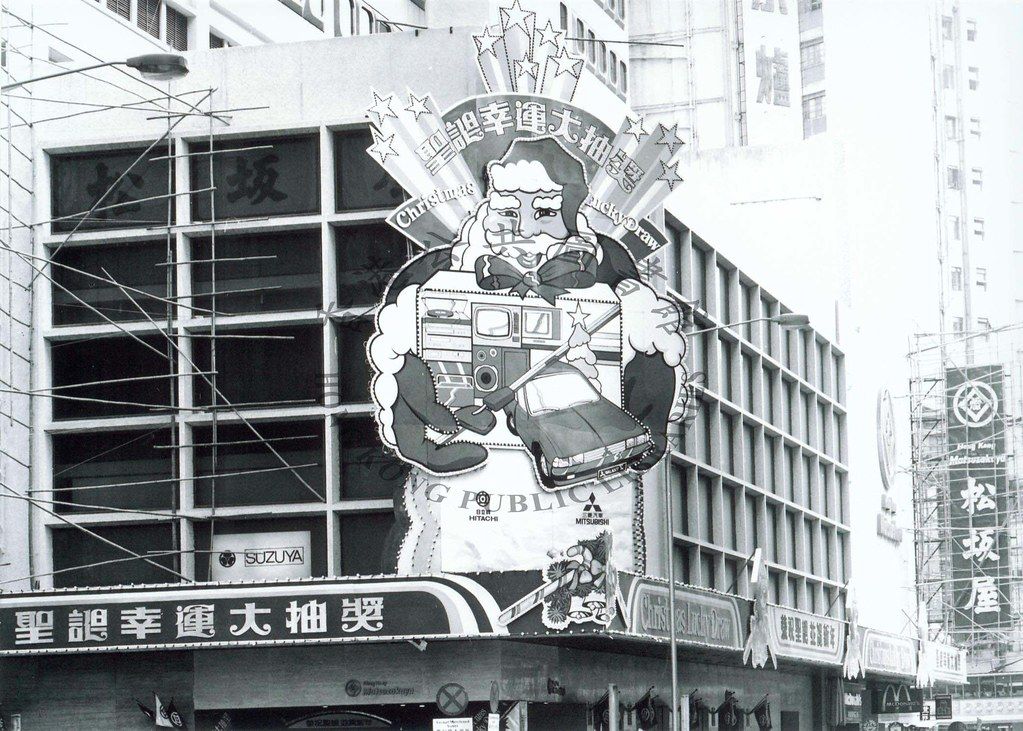
Interestingly, this wasn’t Matsuzakaya’s first foray into Hong Kong. During the Japanese Occupation (1943–1945), the military administration handed over Lane Crawford’s Central store to Matsuzakaya, then one of Japan’s few Western-style department stores.
In the mid-1990s, many overseas retailers began pulling out of Hong Kong ahead of the 1997 Handover. Matsuzakaya followed suit, exiting the market in 1998 after 23 successful years.
2-20 Paterson St
3. MITSUKOSHI (1981 – 2006)
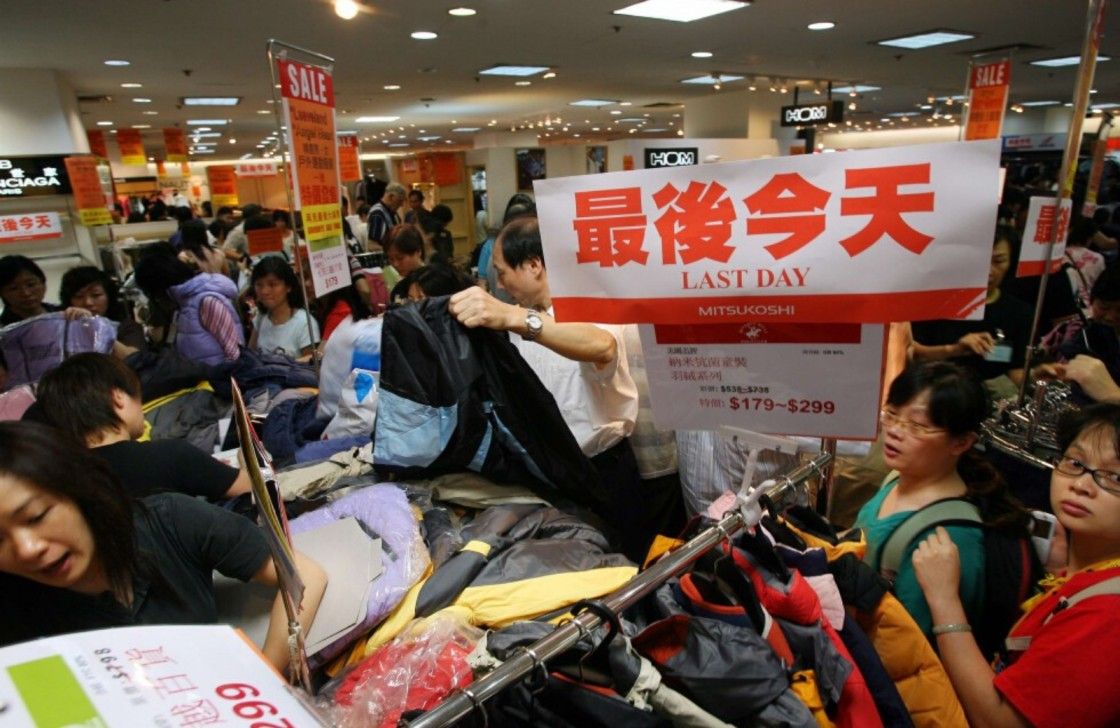
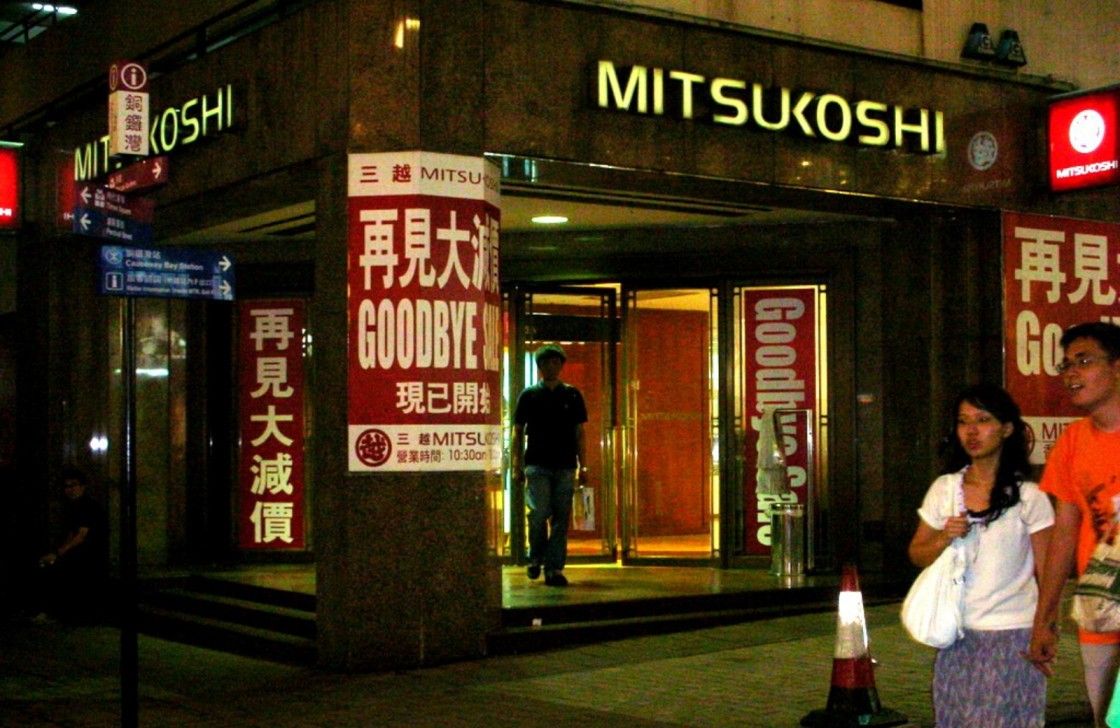
Mitsukoshi was synonymous with affordable luxury and trendy global brands; popular among Hong Kong’s shrewd shoppers. Hongkongers got their first taste of United Colors of Benetton and local label Ice Fire there. Hong Kong was one of the first overseas branches of the leading Japanese retail chain and opened to much fanfare on 26 August 1981.
Few know that Richard Charles Lee (1905 - 1983), son of the aforementioned 'Opium King' Lee Hysan, played a key role in Mitsukoshi’s Hong Kong debut. He originally planned a theatre in Hennessy Centre but changed course to bring Mitsukoshi to the site, recognising its potential impact.
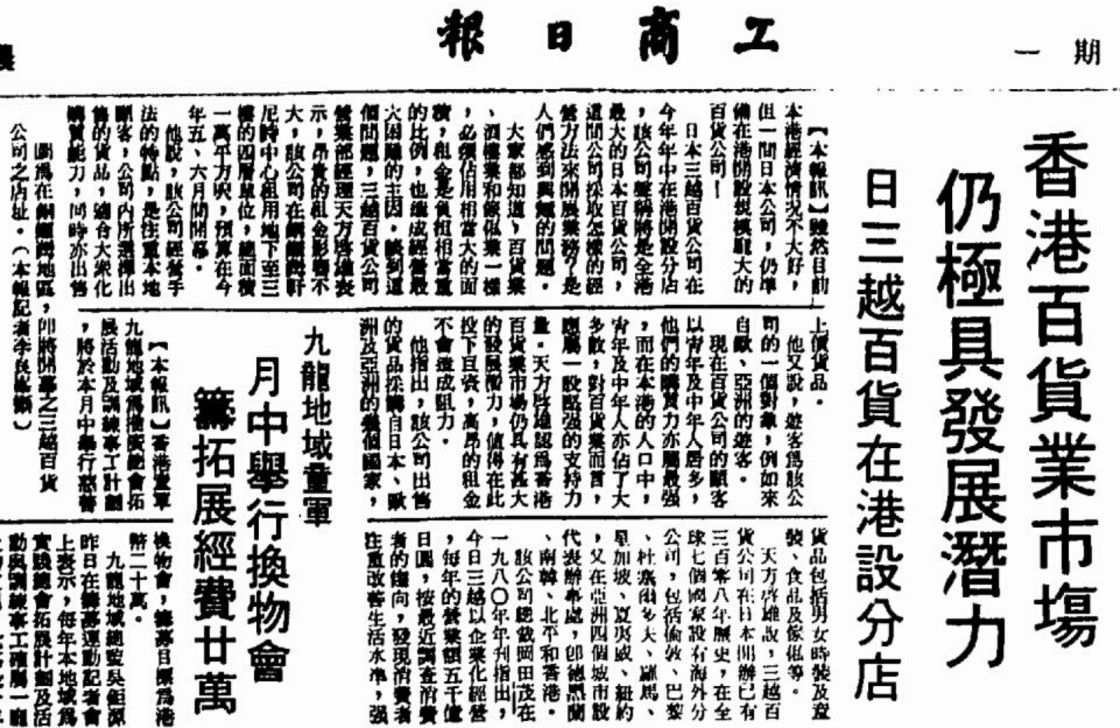
The closure of Mitsukoshi on 17 September 2006 marked the end of an era; many Hongkongers still remember the shopping frenzy in the days, even hours, before the department store closed its doors for good on 17 September 2006. In its heyday, Mitsukoshi’s Hong Kong store generated 40% of the chain’s total overseas revenue. But when Hennessy Centre—its home for 25 years—was marked for demolition, the department store had no choice but to close. The space is now home to the towering Hysan Place.
500 Hennessy Rd
4. SOGO (1985 – present)
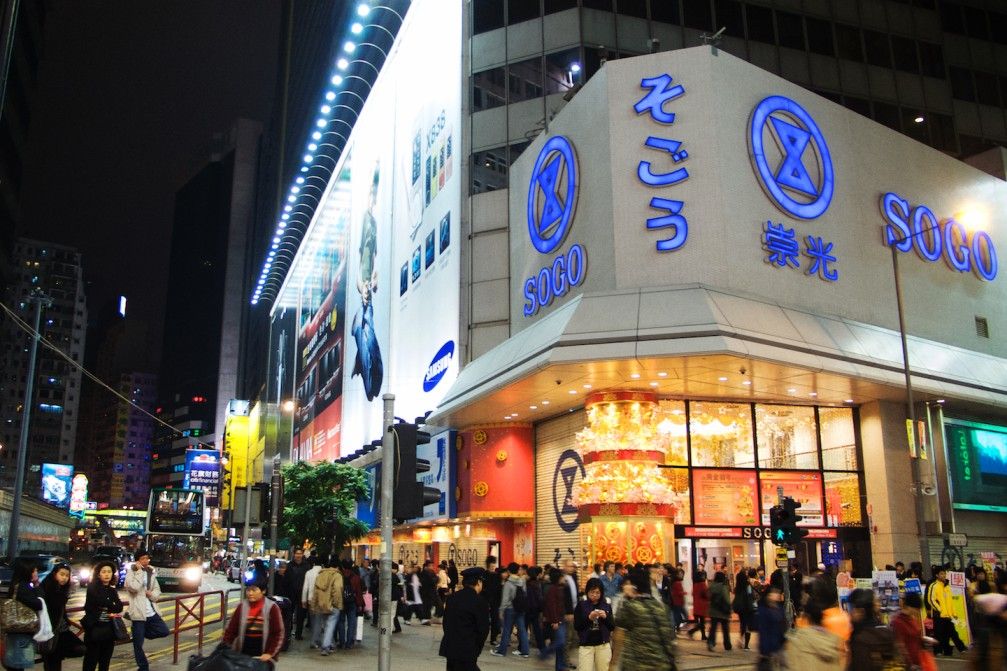
Last but certainly not least, SOGO is the only one of the four legendary Japanese department stores still standing tall in Causeway Bay. Since opening its doors in 1985, SOGO has grown from a relative latecomer to a cornerstone of the district’s identity.
When the original Japanese parent company ran into financial trouble in the 1990s, many thought it might spell the end for SOGO in Hong Kong. But the store got a second life thanks to two local tycoons who bought it out, took the company public, and helped turn it into a Hong Kong retail powerhouse.
SOGO is now more than just a shopping destination—it’s a hub of Japanese culture in Hong Kong. The building also houses the Hong Kong Japanese Club and the Japanese Chamber of Commerce.
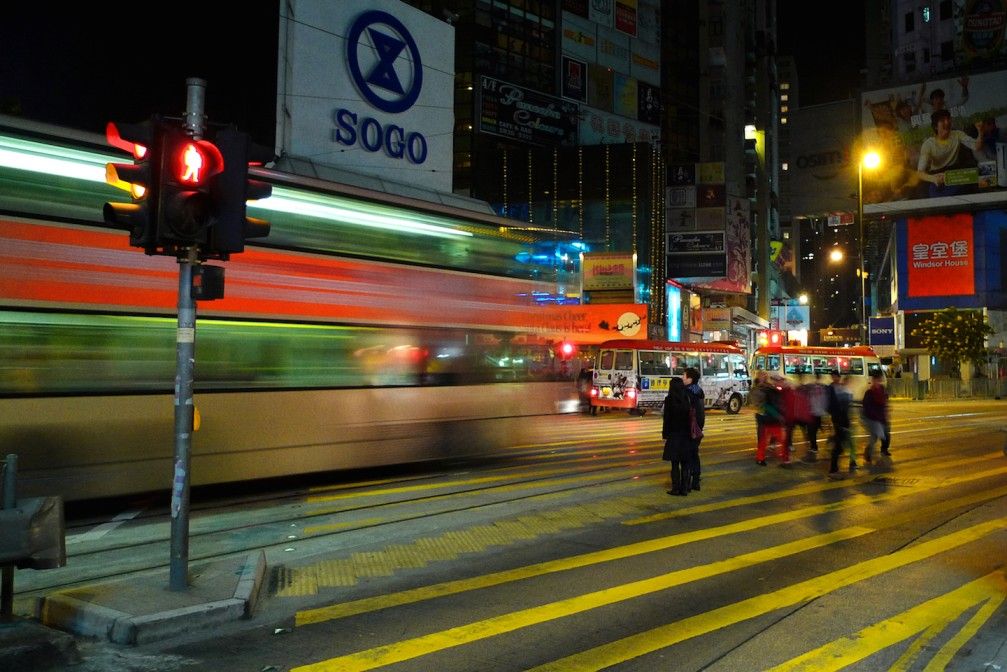
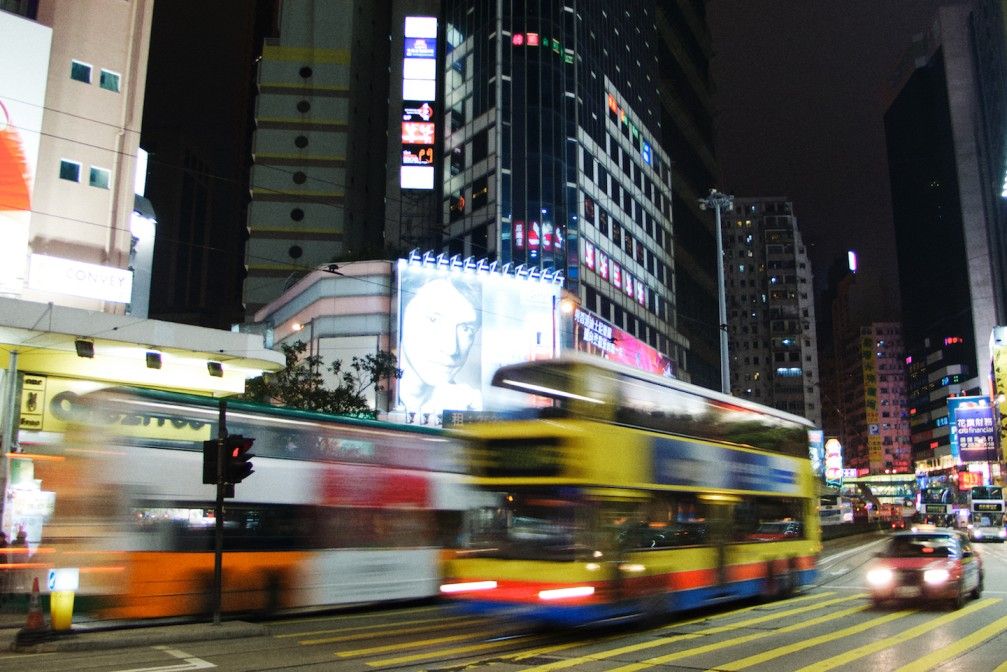
It’s also one of Hong Kong’s most recognisable landmarks—with its own MTR exit and a giant LED screen (the biggest in Asia Pacific!) lighting up Hennessy Road since 2017. The entrance has become a go-to meeting spot for friends, dates, and shopping sprees. It’s one of those places that really define the geography of Causeway Bay.
555 Hennessy Rd
A bit of background
Causeway Bay is the epitome of urban reincarnation. No other area in Hong Kong has so successfully and radically reinvented itself as this prime shopping district. Once known as East Point, this was the first plot of land ever auctioned in colonial Hong Kong. In 1841, Captain William Morgan secured the site for £565 (a hefty sum back then!) on behalf of Jardine Matheson, using it to build warehouses and go-downs. The area became Hong Kong’s version of London’s Docklands.
In the 1920s, the district morphed into an entertainment hub, full of night markets, restaurants, theatres, and the Lee Garden amusement park. The postwar era brought more change, and by the 1960s, the arrival of Japanese department stores ushered in a new retail boom. While many of these stores are now gone, their legacy is visible in the glitzy malls, hotels, and theatres that still make Causeway Bay Hong Kong’s capital of shopping and entertainment.
Ready to explore?
Follow our Causeway Bay heritage walking trail, developed in collaboration with the Lee Gardens Association. Discover personal stories behind the theatres, stores, and markets that shaped this beloved district. The illustrated map, created by talented local artist FlyingPig, is a visual tribute to the vibrant spirit of Causeway Bay.
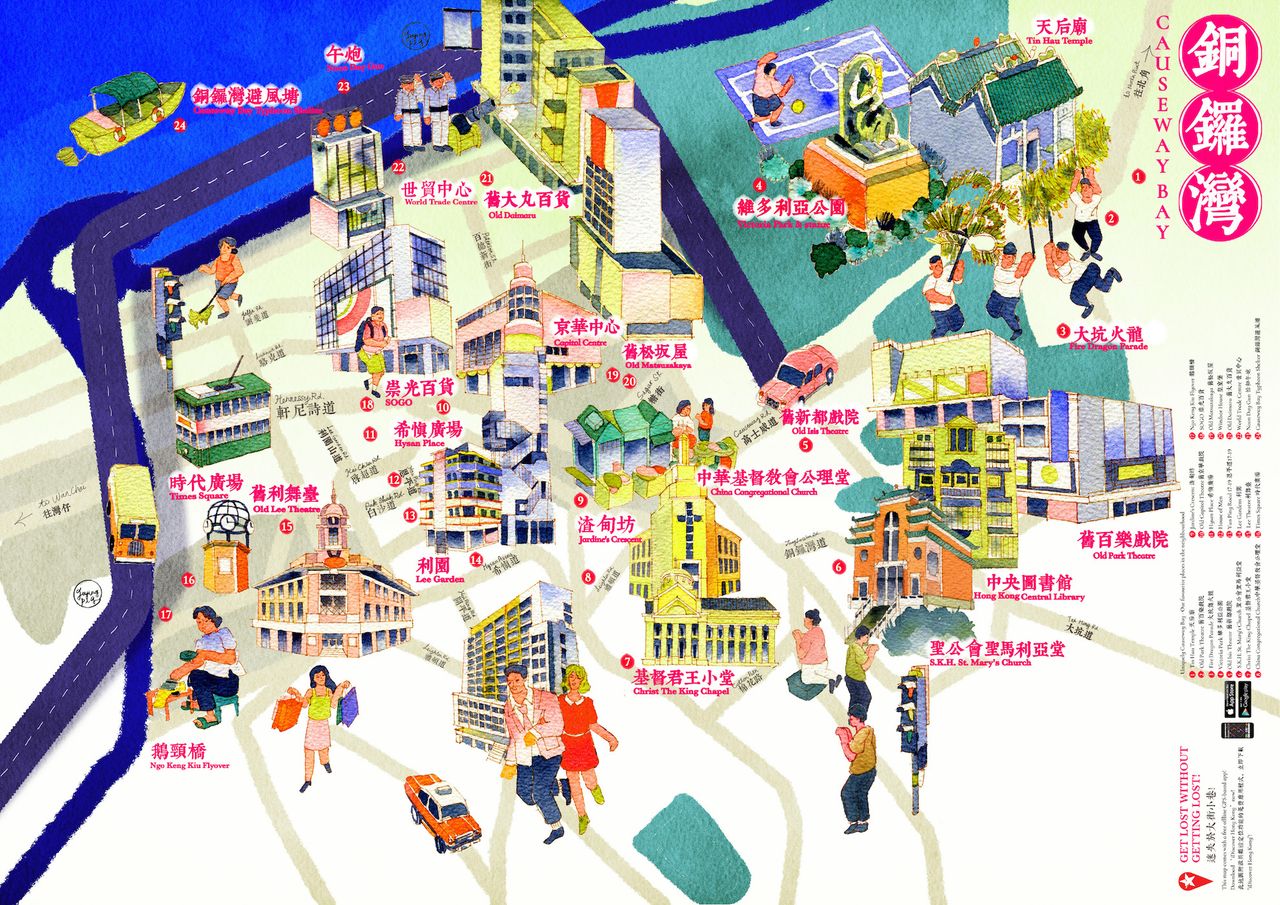
Credits
Created by
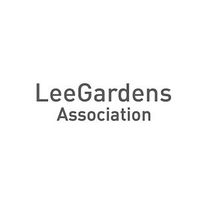
Designed by
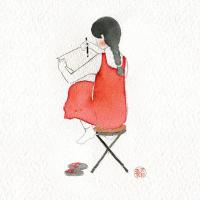
About
Lee Gardens Association 利園協會
Lee Gardens Association is a non-profit making area association. It serves as a neighbourhood business group that brings excitement to the Lee Gardens district through events and activities. 利園協會是一個非牟利地區協會,一向致力發掘利園區各種消閒娛樂,舉辦各項多元化活動,並希望為區內注入全新氣象。
leegardensassociation.hk/enFlyingpig 飛天豬
Flyingpig is a full-time illustrator and artist who has published her first book on drawings of old shop in 2016.After graduation from the School of Creative Media of City University of Hong Kong, she continues to sketch our city of Hong Kong and focuses on drawings that are related to the community. 黃詠珊,現為全職插畫師、藝術家,2016年出版第一本個人畫集《老店風情畫》。於城市大學創意媒體學院動畫系畢業後一直在城市角落寫生,創作與香港和社區有關的繪畫。
www.flyingpig.work